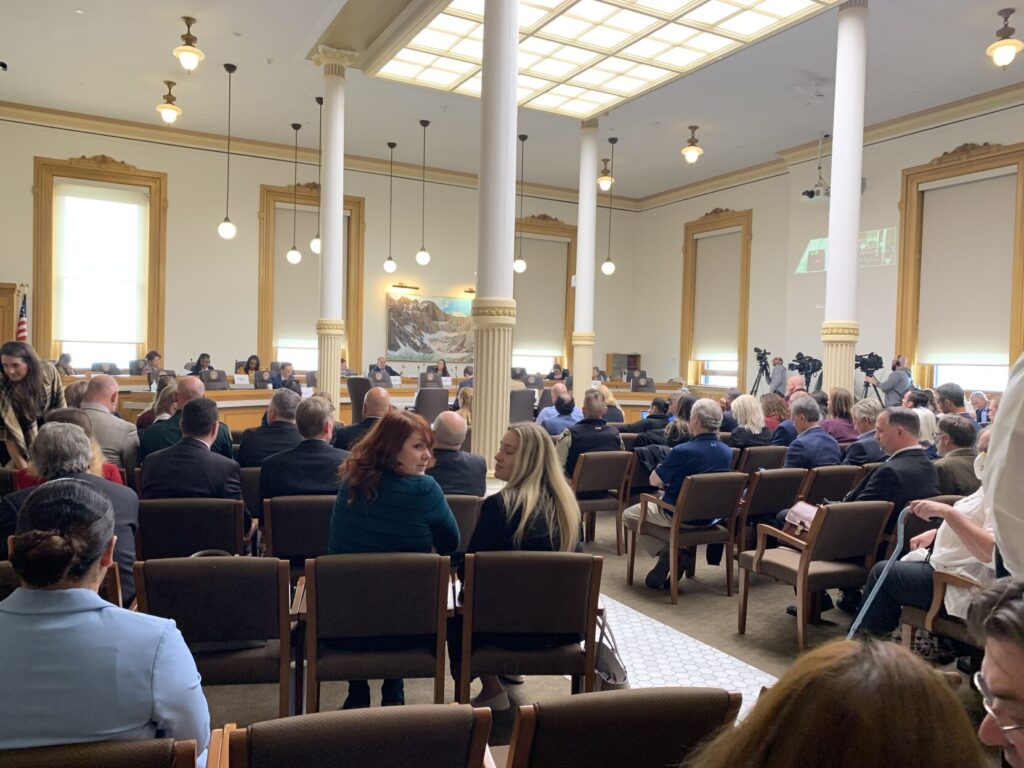How to stop the spread of insidious ‘fake news’? Take a pledge, of course
Denver media critic and progressive journalist Jason Salzman is asking politicians-he’s looking at you, Republicans-to stop spreading lies. He says there’s no longer an excuse, now that publicity around fake news sites is prevalent and Google and Facebook are cracking down on websites that clearly aim to mislead lazy fact-checkers and gullible partisans.
Salzman posts numerous examples on his BigMedia.org blog Tuesday.
“Now that these politicians know they’ve posted fake news on their Facebook pages, my question is, ‘When will they remove it and sign the pledge not to knowingly spread fake news in the future?'” Salzman said in an e-mail to ColoradoPolitics.com. “Is that too much to ask? As it is, the bogus information rots on their Facebook pages, undermining rational debate, journalism, and, ultimately, democracy.”
He called on legislators-Republicans and Democrats-to sign the “Fake News Pledge.” Here’s betting they won’t. But given Salzman’s progressive pedigree and since he singles out only Republicans with his examples, I’m betting the entire right signs up, and probably most of the left won’t, either, unless he can show them some political donors who think they should. That’s how political pledges usually get signed.
The pledge states, in part:
As an elected official, I agree that the spread of fake news on Facebook and other social media platforms has a toxic effect on rational civic discourse. And I understand that when community leaders spread fake news, we legitimize it. By our example, we encourage people to play fast and loose with facts, and we blur the lines between real journalism and fabricated stories masquerading as news.
So, to promote informed and reasoned debate, I pledge not to knowingly spread fake news. If I accidentally do so, by sharing, “liking,” or posting inaccurate information, packaged to look somehow like news, I will remove the falsehood as soon as possible and post a correction as well as an explanation of why I posted it in the first place.Salzman watched legislators’ Facebook pages from Oct. 1 through Election Day on Nov. 8. He cited examples from Republicans Rep. Gordon Klingenschmidt of Colorado Springs, Rep. Polly Lawrence of Roxborough Park and Sen. Laura Woods of Arvada for posting, sharing or liking fake news articles on their respective Facebook pages.
Salzman pointed out in a press release: “Lawrence posted a fake item, even though the website that produced it has a disclaimer saying its content is fabricated. Klingenschmidt posted fake news stating that Justice Anton Scalia was assassinated. And Laura Woods shared fake news with a false headline that vaccines cause autism.”
But in the current mode of news and politics, “fake” can be in the eye of the beholder. This month 9News anchor Adele Arakawa called a media gossip site’s report on her retirement “fake” news. It turned out, she is retiring in June, but she said the site’s claim she was being forced out immediately was wrong. She posted her first news commentary in her 40 years as a journalist, she said, to set the record straight, piling on that fake news is “ugly, insidious and undermines the very values I’ve worked hard to exemplify for my forty-plus years in this business.”
Does getting a fact wrong make something fake news? Then the media has a lot more fake news than we can handle, under Arakawa’s definition, unless 9News has never gotten anything wrong.
Salzman cites previous Facebook posts outside the Oct. 1 to Nov. 8 window, as well. This one is bound to be a favorite:
State Rep. Kit Roupe (R-Colorado Springs), who will also be leaving the legislature in January, shared a “public service announcement” in May, stating “For all those who think it’s nice to walk around with your pants below your butt…read the following explanation: The trend was born in the United States’ jails, where prisoners who were willing to have sex with other prisoners needed to invent a signal that would go unnoticed by the guards so they wouldn’t suffer consequences. So, by partially showing their butts, they showed that they were available to be penetrated by other inmates. Click ‘share’ if you want to join the cause for a better dressed and more educated world.”
About a year before Roupe spread this, Snopes had dutifully researched this topic, concluding Roupe’s public service announcement to be false.
Snopes:
“While sagging did gain its start in the U.S. prison system, it was not a clothes-wearing style authored by imprisoned homosexuals intent upon advertising their interest in casual flings. Sagging pants became the behind-the-bars thing thanks to ill-fitting prison-issue garb: some of those incarcerated were provided with clothing a few sizes too large. That oversizing, coupled with the lack of belts in the big house, led to a great number of jailbirds whose pants were falling off their arses. (Belts are not permitted in most correctional facilities because all too often the lifeless bodies of their inmate owners have been found hanging from them.)”
So fact-check before you post, lawmakers. Salzman is clicking.











